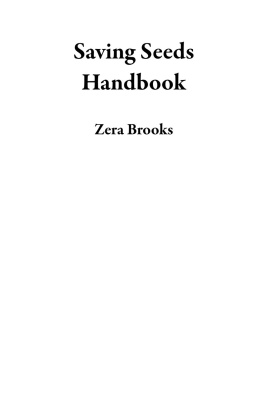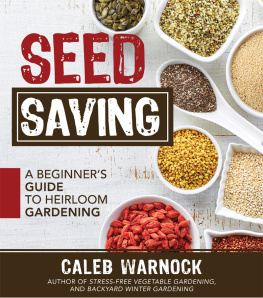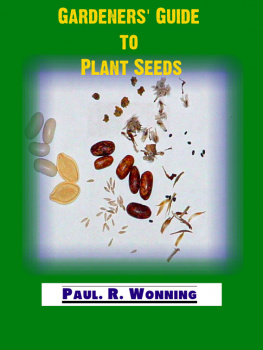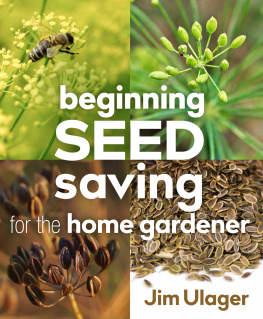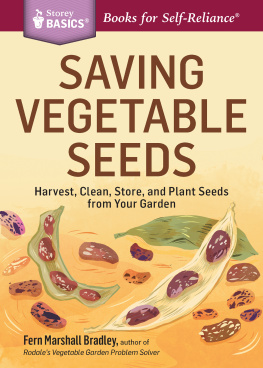Zera Brooks - Saving Seeds Handbook: A Seed Saving Guide for Gardeners to Sow, Harvest, Clean, and Store Vegetable and Flower Seeds Plus Techniques To Get You Started
Here you can read online Zera Brooks - Saving Seeds Handbook: A Seed Saving Guide for Gardeners to Sow, Harvest, Clean, and Store Vegetable and Flower Seeds Plus Techniques To Get You Started full text of the book (entire story) in english for free. Download pdf and epub, get meaning, cover and reviews about this ebook. year: 2022, publisher: Zera Brooks, genre: Children. Description of the work, (preface) as well as reviews are available. Best literature library LitArk.com created for fans of good reading and offers a wide selection of genres:
Romance novel
Science fiction
Adventure
Detective
Science
History
Home and family
Prose
Art
Politics
Computer
Non-fiction
Religion
Business
Children
Humor
Choose a favorite category and find really read worthwhile books. Enjoy immersion in the world of imagination, feel the emotions of the characters or learn something new for yourself, make an fascinating discovery.
- Book:Saving Seeds Handbook: A Seed Saving Guide for Gardeners to Sow, Harvest, Clean, and Store Vegetable and Flower Seeds Plus Techniques To Get You Started
- Author:
- Publisher:Zera Brooks
- Genre:
- Year:2022
- Rating:5 / 5
- Favourites:Add to favourites
- Your mark:
Saving Seeds Handbook: A Seed Saving Guide for Gardeners to Sow, Harvest, Clean, and Store Vegetable and Flower Seeds Plus Techniques To Get You Started: summary, description and annotation
We offer to read an annotation, description, summary or preface (depends on what the author of the book "Saving Seeds Handbook: A Seed Saving Guide for Gardeners to Sow, Harvest, Clean, and Store Vegetable and Flower Seeds Plus Techniques To Get You Started" wrote himself). If you haven't found the necessary information about the book — write in the comments, we will try to find it.
In recent times, several gardeners have taken an interest in saving seeds from their plants; however, the process of saving seeds can be scary, but yet simple. Seed saving takes some time and effort, but it is well worth it for gardeners, irrespective of the level of experience.
Once youve found a variety that suits you, saving seeds from it will enable you to repeat your success time after time. Why? Because plants are much more sensitive than you might think to the growing conditions distinct to each garden. What works well in your garden may not work in your neighbors. There are other factors at play, including your specific microclimate, the microbiological health of your garden soil, and chemical or other harmful exposure. Other factors are the minimum distance between plants of similar species, which is important so that cross-pollination does not take place with another variety, as well as the minimum number of plants that need to be grown to conserve the innate genetic diversity.
Its also important to identify the characteristics of the variety so that when grown, plants not breeding true are not picked. It is also important to adhere to effective seed storage procedures to keep the seed viable. We can go on and on about how well informed you need to be before you start saving seeds, but we cant; hence the reason why this book, Saving Seeds Handbook, was written, to provide you with virtually all you need to save seeds successfully.
Here are a couple of what you will learn in this book;
So, what are you waiting for?
Get a copy of this book RIGHT NOW to get started
Zera Brooks: author's other books
Who wrote Saving Seeds Handbook: A Seed Saving Guide for Gardeners to Sow, Harvest, Clean, and Store Vegetable and Flower Seeds Plus Techniques To Get You Started? Find out the surname, the name of the author of the book and a list of all author's works by series.

